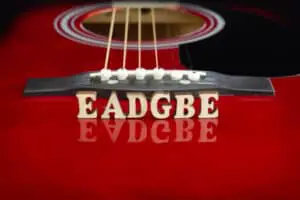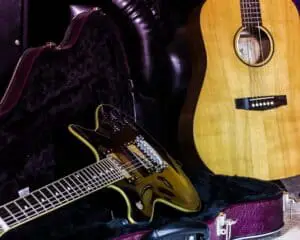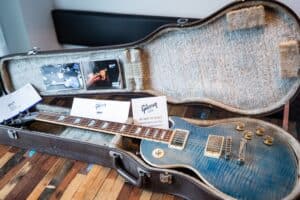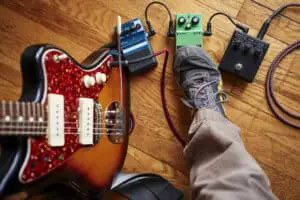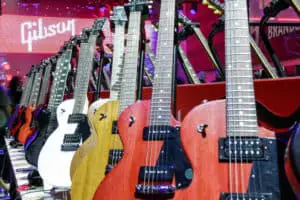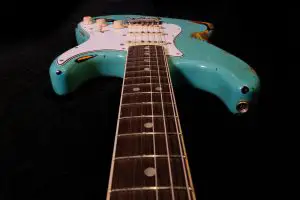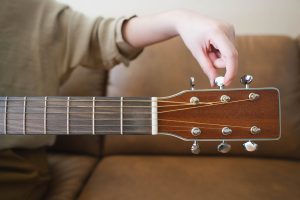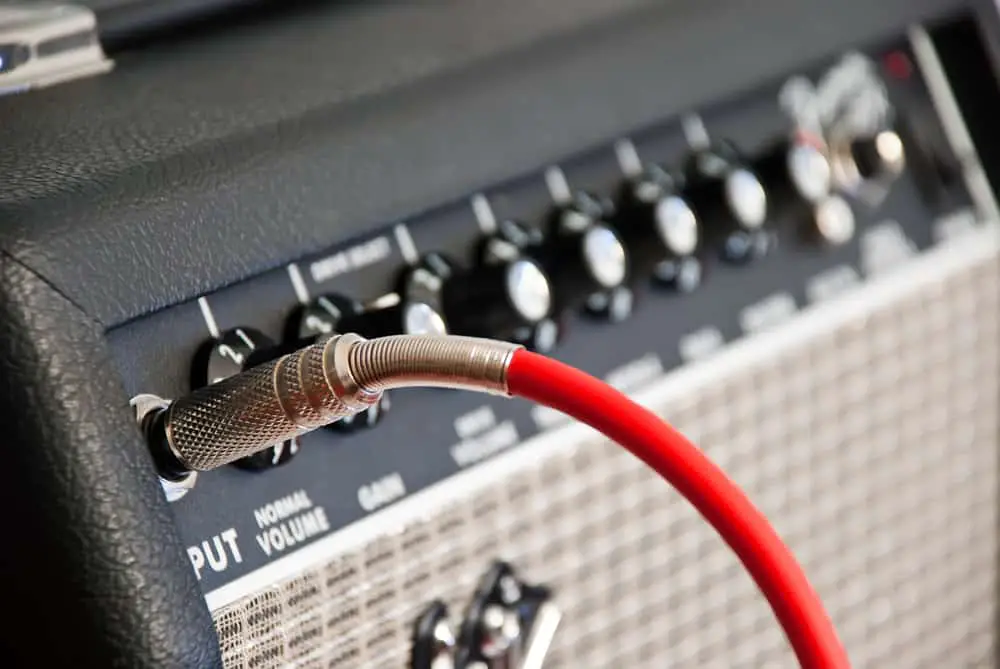
It’s always a drag when your guitar amp goes out. You’re in the middle of a gig, and suddenly your guitar starts making that weird noise. You look over to your amp and see the power light is off. Uh oh.
There could be several reasons why your amp isn’t working.
Maybe you forgot to turn it on. Or maybe the volume knob is turned down too low. Or maybe there’s a problem with the wiring or cable connecting your guitar to the amp. It is also possible that you are struggling with a blown amplifier.
Whatever the reason, we’re here to help you solve the problem so you can get back to playing your guitar as soon as possible.
First, let’s go over some of the most common reasons why amps stop working. Then we’ll discuss some troubleshooting tips to help you fix the problem.
Reasons for Guitar Amp Malfunctioning
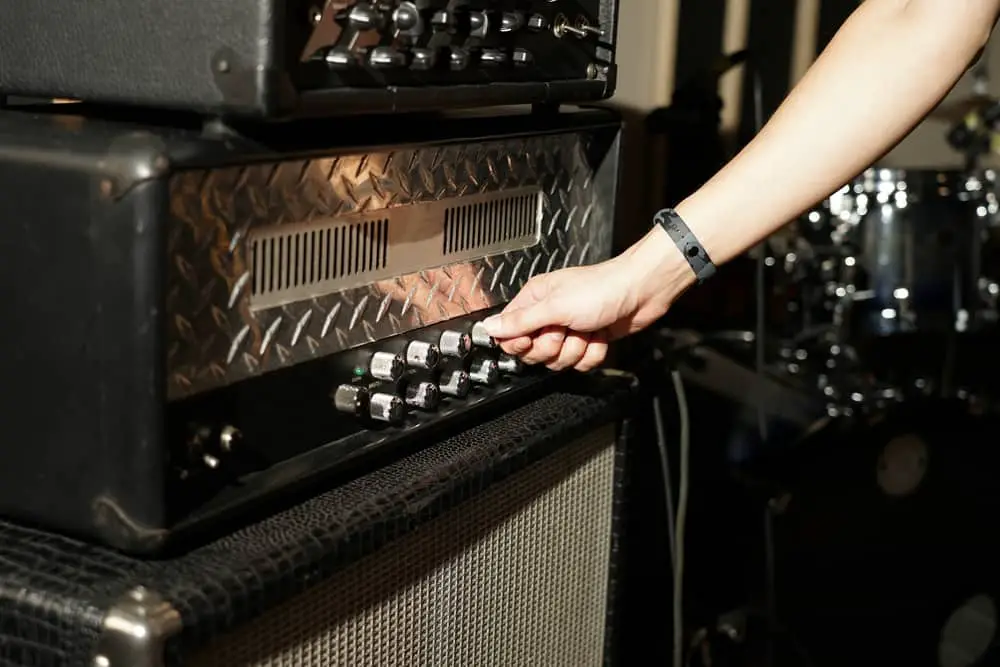
There are many reasons why a guitar amp might malfunction, including problems with the power switch, volume knob, guitar cable, or amplifier itself.
Let’s explore these reasons in more detail:
The Amplifier Is Not Turned On
If the amplifier is not turned on, you will need to turn on the power switch. Look for a switch on the back of the amplifier or the power cord. If the switch is in the “off” position, flip it to the “on” position.
The Input Is Not Plugged In
If the input is not plugged in, it can’t be turned on and will not work. As a result, your amp will be muted, and you will not be able to hear any sound.
The Volume Knob Is Turned Down or Off
The most common reason for a guitar amp malfunctioning is that the volume knob is turned down or off. Remain calm and turn the knob back on to the desired setting. If the problem persists, consult an expert.
The Guitar Is Not Plugged Into the Amplifier
If the guitar is not plugged into the amplifier, there will be no sound coming from the speaker. This is because the amplifier is what amplifies the signal from the guitar.
Problem With the Wiring or Cable Connecting the Guitar and Amplifier
This can cause several problems, including the guitar amp not turning on, the sound being distorted, or the sound is muted.
If you suspect that there is a problem with the wiring or cable, you should first check the connections. Make sure that the cable is plugged in securely at both ends.
The Amp Is Blown or Damaged
The sound of the guitar will be altered if the amp is damaged. This is because the guitar relies on the amp to create its sound. If the amp is not working correctly, then the guitar’s sound will be affected.
A blown amplifier’s most frequent audible signal is a lousy buzzing or scraping sound, either alone or at the pitch of the note being attempted to produce. If you hear this sound, your amplifier is likely blown.
Another sign that your amp may be blown is if it produces a dull, thumping sound. This is usually caused by a loose tube or something else rattling inside the amplifier.
Troubleshooting Tips to Fix Your Guitar Amp

If you are experiencing problems with your guitar amp, the following are a few troubleshooting tips that you can try to fix the issue.
Check the Power Cord
The first thing you should do is to check the power cord. Make sure that the cord is plugged into an outlet and that the amp is turned on.
If the power cord is plugged in and the amp is still not working, try plugging the cord into a different outlet. This will help you rule out any problems with the outlet.
Test Different Cables and Cords
Test different cables and cords to rule out the possibility that a loose connection is a problem. If you have access to another guitar amplifier, try plugging your guitar into it using the same cable.
Be careful while testing the cables as the electricity running through them can be dangerous.
Clean the Amp’s Input and Output Jacks
Input and output jacks can be cleaned with a small brush. Gently clean the jacks to remove any dirt, dust, or other debris causing a poor connection.
After all, the connection between the guitar and amp is critical for getting the best sound possible. By keeping the jacks clean, you can help ensure that the sound quality is as good as possible.
Inspect the Amp for Damage
If there is any physical damage to the amplifier itself, it will need to be fixed or replaced. If it is damaged, a few other methods can be used to try and fix it.
- One method is to use glue to fix any tears in the amp. This will require the use of a strong adhesive, such as epoxy.
- Another method is to use tape to hold the amp in place. This is not a permanent fix, but it can help hold the amp in place until a more permanent fix can be made.
- The last method is to replace the amp. This is the most permanent fix, but it will also require purchasing a new amplifier.
Conclusion
So, what’s the verdict? Did you figure out why your amp wasn’t working? Our outlined troubleshooting techniques should help you identify and fix the problem. Whether it’s a blown amplifier or just a simple wiring issue, this article will help get your guitar amp sounding its best in no time.
Now that you’re armed with this knowledge, how will you put it into practice? We want to hear about your experiences – share them with us in the comments section below!
Frequently Asked Questions
The most common symptom of a blown guitar amp is distorted sound. Other symptoms can include overheating, crackling or popping noises, and loss of power. If you notice these symptoms, take your amp to a qualified guitar technician for diagnosis and repair.
You can do a few things to help prevent your guitar amp from blowing. First, make sure you use the correct type of power cord for your amp. Second, keep your amp clean and free of dust and dirt. Finally, don’t use your amp at full volume all the time.

